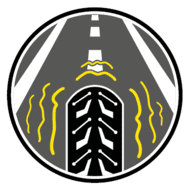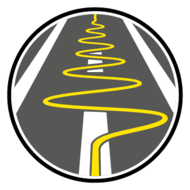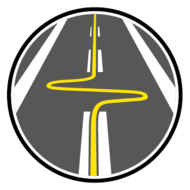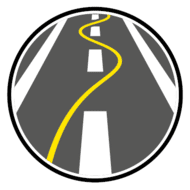
Tips and advice motorbike
Some unpleasant sensations can occur while riding your motorcycle: vibrations, wobbles, kickbacks or weaves. Why do these phenomena happen and how can they be solved? Read the answers in our article.
Motorcycle handlebar vibrations

This phenomenon occurs at both the front and rear of the motorcycle, but is felt most strongly at the handlebars, usually at speeds between 90 to 130 km/h.
You feel an unpleasant vibration in your hands, a signal that should not be ignored.
In most cases your tyres are not the cause. Most often, it is indeed a bad balance of the wheels that can give motorcycle handlebar vibrations. But it can also be due to a wrong centring of the tyre on the rim.

Motorcycle handlebar vibrations are felt most strongly at the handlebars
What to do if motorcycle handlebar vibrations occur?
We recommend that you take your motorcycle to a professional to identify the cause of the problem and correct, if necessary, the wheel balance and/or the centring of the tyre on the rim.
Motorcycle handlebar wobble

The motorcycle handlebar wobble is a sideways, continuous oscillation of the fork at low speed (<100 km/h) usually whilst slowing down.
The wobble is only felt at the handlebar level. You have the unpleasant sensation that the handlebars move sideways, from right to left.
When you accelerate and then release the throttle, there is a point (usually between 50 km/h and 100 km/h) where the mass transfer to the front end produces this wobble. The frequency of the lateral wobble can be more or less strong depending on the bike.

Motorcycle handlebar wobble is a sideways, continuous oscillation of the fork at low speed
What to do if a motorcycle handlebar wobble occurs?
Don't tense up. Hold the handlebars a little looser and, at a reduced speed, the phenomenon will disappear.
At the tyre level, there are several causes that can have an impact on the wobble. In particular: a high level of wear and an incorrect pressure. Some motorcycles are more sensitive to this than others.
To put an end to this phenomenon of motorcycle handlebar wobble, we recommend that you go to a professional and describe the phenomenon as accurately as possible.
Motorcycle kickback

The motorcycle kickback is a phenomenon that is felt at the front of the vehicle. The handlebars make a right-left movement, similar to the handlebar wobble described above.
It is a sharp sideways movement at the front (the fork moves back and forth), it is intermittent and very fast, occurring particularly whilst accelerating.
But unlike the wobble, a kickback is not a recurring problem. It is generally triggered by an external source such as a bump or join in the tar.
Some motorcycles are more sensitive to this than others.
What to do if a motorcycle kickback occurs?
Kickback occurs very suddenly. If it happens, let it happen. Just decelerate and it will go away.
You may wish to consult a professional to ensure that there is not a defect in the fork that could lead to a recurrence.
Motorcycle weaving

A motorcycle weave is a wavering movement of variable extent occurring on straight lines or bends, usually starting at an average speed of around 140 km/h.
This is a phase shift between the front and rear wheel that results in this weaving. You have the feeling that the handlebars go from right to left.
In this video you will see exactly how the motorcycle weaving effect takes place:
Cookie Privacy
To watch this video, you'll have to accept some cookies from YouTube. Just click on the button below to open the cookie module.
Better stability for more safety
This phenomenon is not to be taken lightly as it can have a significant impact on your safety: the higher your speed, the more violent this phenomenon becomes and, at a certain threshold, it can throw you off the motorbike.

A motorcycle weave is a wavering movement usually starting at about 140 km/h.
Some bikes are simply more sensitive to this phenomenon, so it may happen on a new one, too.
Here are the cases in which tyres can have an impact on the motorcycle weaving:
- Their level of wear
- Their pressure
- Their structure: bias/radial
- Their additional load (luggage, passenger, top case.....)
What to do if motorcycle weave occurs?
Don't speed up! Don't grip the handlebars, hold them a little looser.
Don't brake suddenly either. Decelerate and the phenomenon will reduce until it disappears.
Then take the following precautions:
- Check tyre pressure and adjust if necessary
- Check tyre wear: if the tyres are too worn, change them
- Check if the tyres are homologated. For example, if you have fitted Bias when Radial was recommended, this may be a cause of the motorcycle weave. Always make sure that your motorbike is fitted with tyres approved by the manufacturer.
- You can go to a professional to rule out other possible causes of the problem

Find a professional near you
Search by
Address, City or Postcode
Locate me

